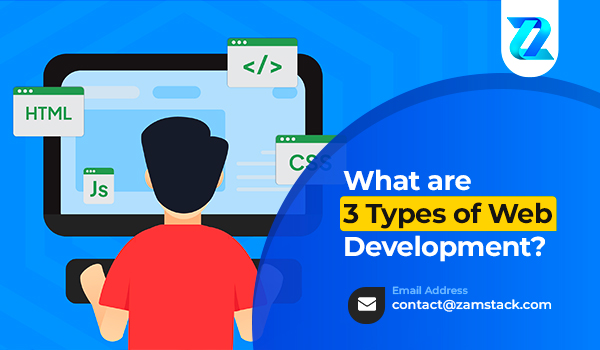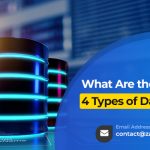So, you’ve stumbled upon the world of web development—awesome choice! But as you dig deeper, you’re likely to hear terms like front-end, back-end, and full-stack. What do they really mean? Why do they matter?
Well, think of a website like a car. Some folks build the exterior (front-end), others handle the engine (back-end), and a few can do both (full-stack). Let’s break it down, one piece at a time.
1. Front-End Web Development
What is Front-End Development?
Front-end development is all about the look and feel of a website. When you visit a site, everything you see—buttons, text, images, and layout—that’s front-end magic. It’s like the storefront of a shop; it has to be welcoming and easy to navigate.
Key Technologies Used in Front-End
HTML – The Skeleton
HyperText Markup Language (HTML) is the backbone of web pages. It structures content like headings, paragraphs, and images. Without it, there’s no page—just blank space.
CSS – The Style
Cascading Style Sheets (CSS) bring the design flair. Colors, fonts, spacing, layouts—CSS makes it all visually appealing.
JavaScript – The Brain
JavaScript adds interactivity. Clicking a button? Pop-up forms? Animated sliders? That’s JavaScript in action.
Popular Front-End Frameworks
React
Created by Facebook, React is super popular for building dynamic interfaces. Think Facebook-level interactivity.
Angular
A robust framework backed by Google. It’s perfect for building enterprise-level apps.
Vue.js
Lightweight and beginner-friendly, Vue is a rising star in the front-end world.
Role of a Front-End Developer
Front-end developers craft beautiful, responsive websites. They work closely with designers and often need to understand UX/UI principles to ensure users love every click.
2. Back-End Web Development
What is Back-End Development?
Back-end development is the engine room of a website. It manages data, user authentication, server logic, and everything users don’t see but rely on heavily.
Imagine ordering a pizza online. The form and menu are front-end, but the logic that processes your order and sends it to the pizzeria? That’s back-end.
Common Back-End Languages
PHP
A veteran in web development, PHP powers platforms like WordPress. It’s great for server-side scripting.
Python
Loved for its readability and flexibility, Python is widely used in web apps and AI-driven platforms.
Node.js
Unlike others, Node.js uses JavaScript on the back-end too—perfect for full-stack development.
Server, Database, and API Integration
Back-end developers manage how a site communicates with servers and databases. They build APIs that allow different parts of the system—or even different apps—to talk to each other.
Popular Back-End Frameworks
Laravel
A PHP-based framework that’s secure, scalable, and elegant.
Django
Built on Python, Django promotes clean and rapid development.
Express.js
Minimal and fast, Express is built on Node.js and perfect for building APIs.
Role of a Back-End Developer
Back-end developers are logic masters. They ensure everything works smoothly behind the scenes—handling data, managing requests, and keeping things secure.
3. Full-Stack Web Development
What is Full-Stack Development?
A full-stack developer is like a superhero who can fly and fight on the ground. They handle both the front-end and back-end of a web application.
Why Full-Stack Developers are in Demand
Businesses love full-stack devs because they understand the full picture. They can jump between tasks and often speed up development by reducing handoffs between teams.
Common Tools & Technologies Used
Full-stack devs use:
-
HTML, CSS, JavaScript (Front-End)
-
Node.js, Python, PHP (Back-End)
-
Databases like MongoDB or MySQL
-
Version control tools like Git
-
Deployment platforms like Netlify or AWS
Front-End vs Back-End vs Full-Stack – Key Differences
| Aspect | Front-End | Back-End | Full-Stack |
|---|---|---|---|
| Focus | User interface | Server-side logic | Both UI and server |
| Languages | HTML, CSS, JS | Python, PHP, Node.js | Combination of both |
| Tools | React, Vue | Django, Laravel | MERN, MEAN, LAMP |
| Complexity | Visual design & logic | Data and architecture | All of the above |
Benefits of Knowing Web Development Types
Choosing the Right Career Path
Knowing these types helps you pick your lane. Are you creative? Go front-end. Logical? Try back-end. Want both? Full-stack’s your jam.
Better Collaboration on Projects
Understanding the bigger picture makes teamwork easier. You’ll speak the same language with designers, developers, and project managers.
Enhanced Problem-Solving
When you know how each layer works, you’re better equipped to troubleshoot issues and build more efficient solutions.
Emerging Trends in Web Development
JAMstack
JAMstack (JavaScript, APIs, Markup) is revolutionizing how websites are built—faster, safer, and more scalable.
Low-Code/No-Code Platforms
Tools like Webflow and Bubble are empowering non-developers to build functional websites without writing code.
AI in Web Development
AI tools now help automate testing, optimize UX, and even write code. The future is looking smart and swift.
Conclusion
Whether you’re just curious or considering a career in tech, understanding the three types of web development—front-end, back-end, and full-stack—opens doors to a world of possibilities. It’s like learning the parts of a car before becoming a race car driver. With these skills, you’re not just browsing the web—you’re ready to build it.
FAQs
1. What does a front-end developer do daily?
They focus on creating and optimizing visual elements—layouts, buttons, forms—making sure everything looks great and works across devices.
2. Is full-stack development harder than front-end or back-end?
It can be more complex since you’re juggling both sides. But with practice, many developers grow into the full-stack role naturally.
3. Do I need a degree to become a web developer?
Nope! Many successful devs are self-taught or have gone through bootcamps. Skills > Degrees.
4. Which web development type is best for beginners?
Front-end is usually more visual and beginner-friendly. It gives quicker results, which helps keep motivation high.
5. Can I learn all three types of web development?
Absolutely! Start with one, build confidence, then gradually learn the rest. Many devs evolve into full-stack with time.












